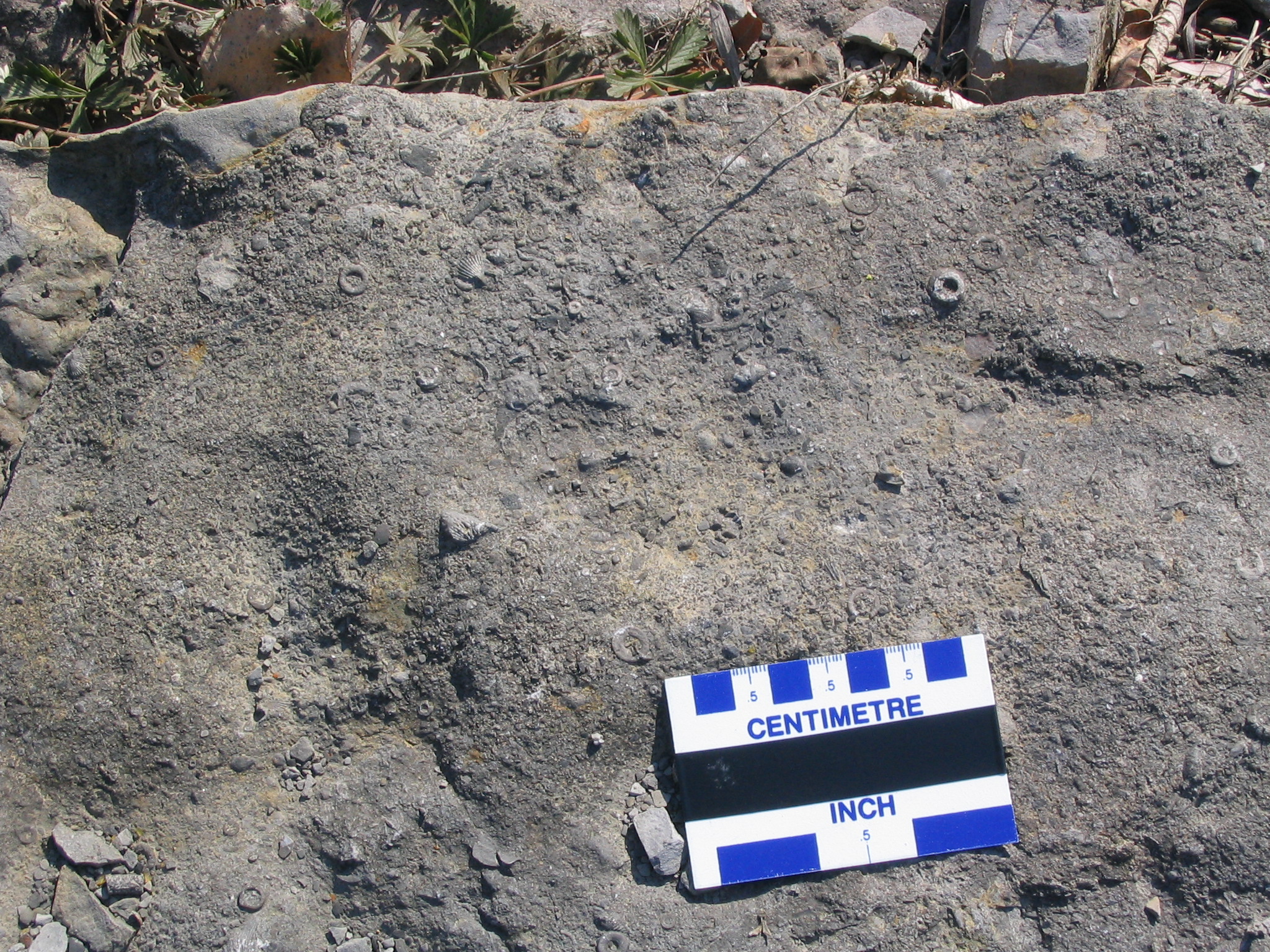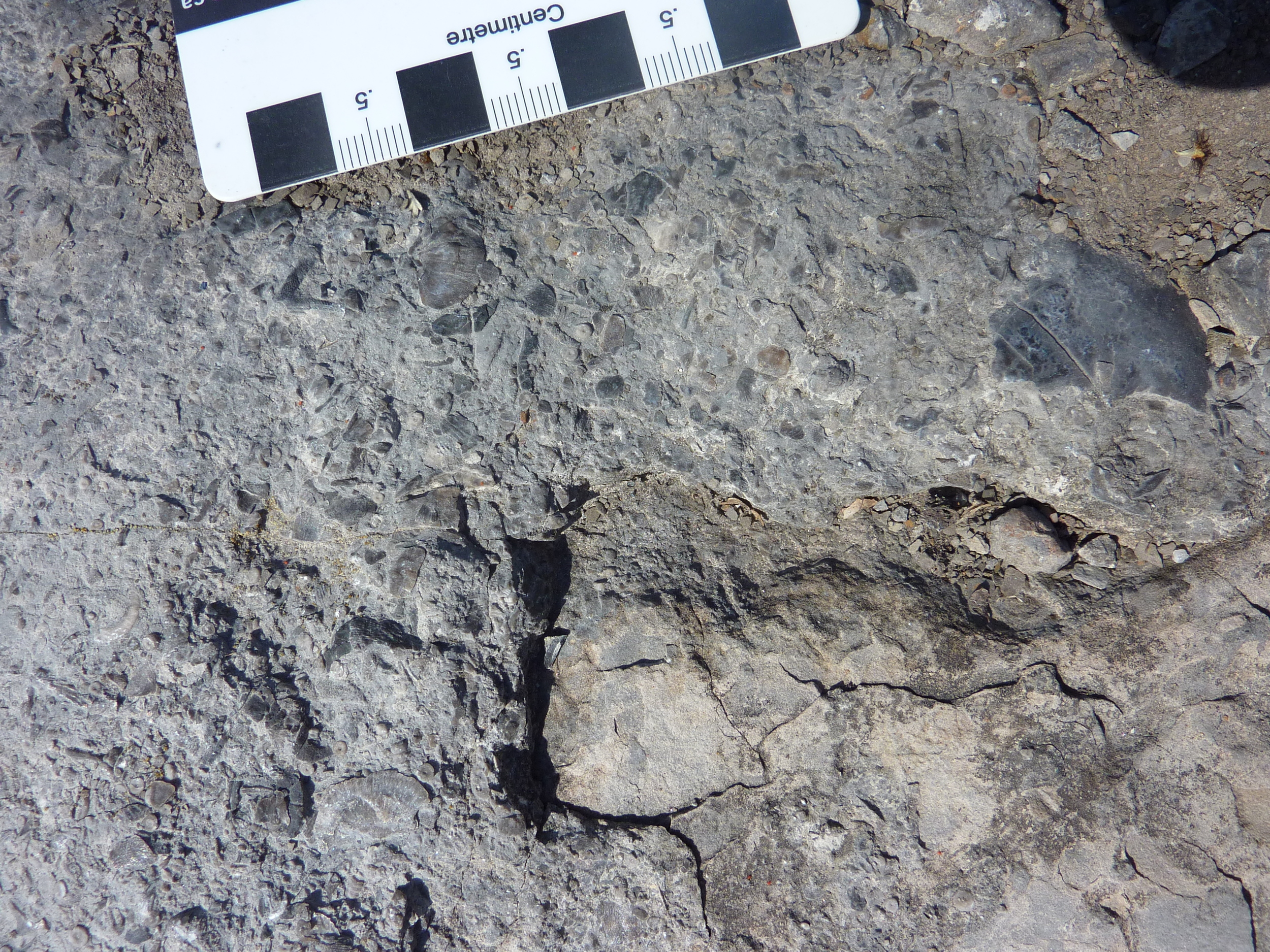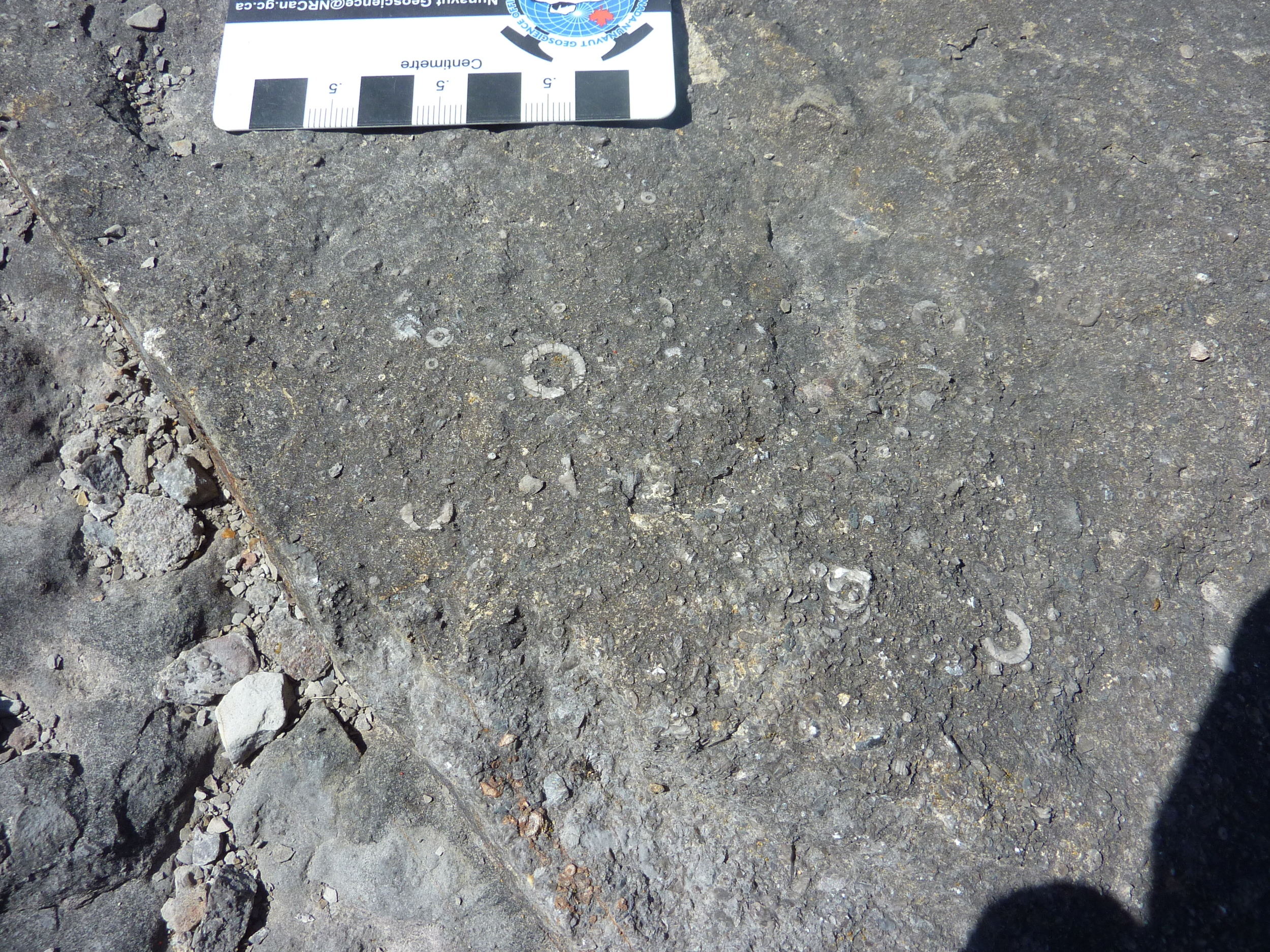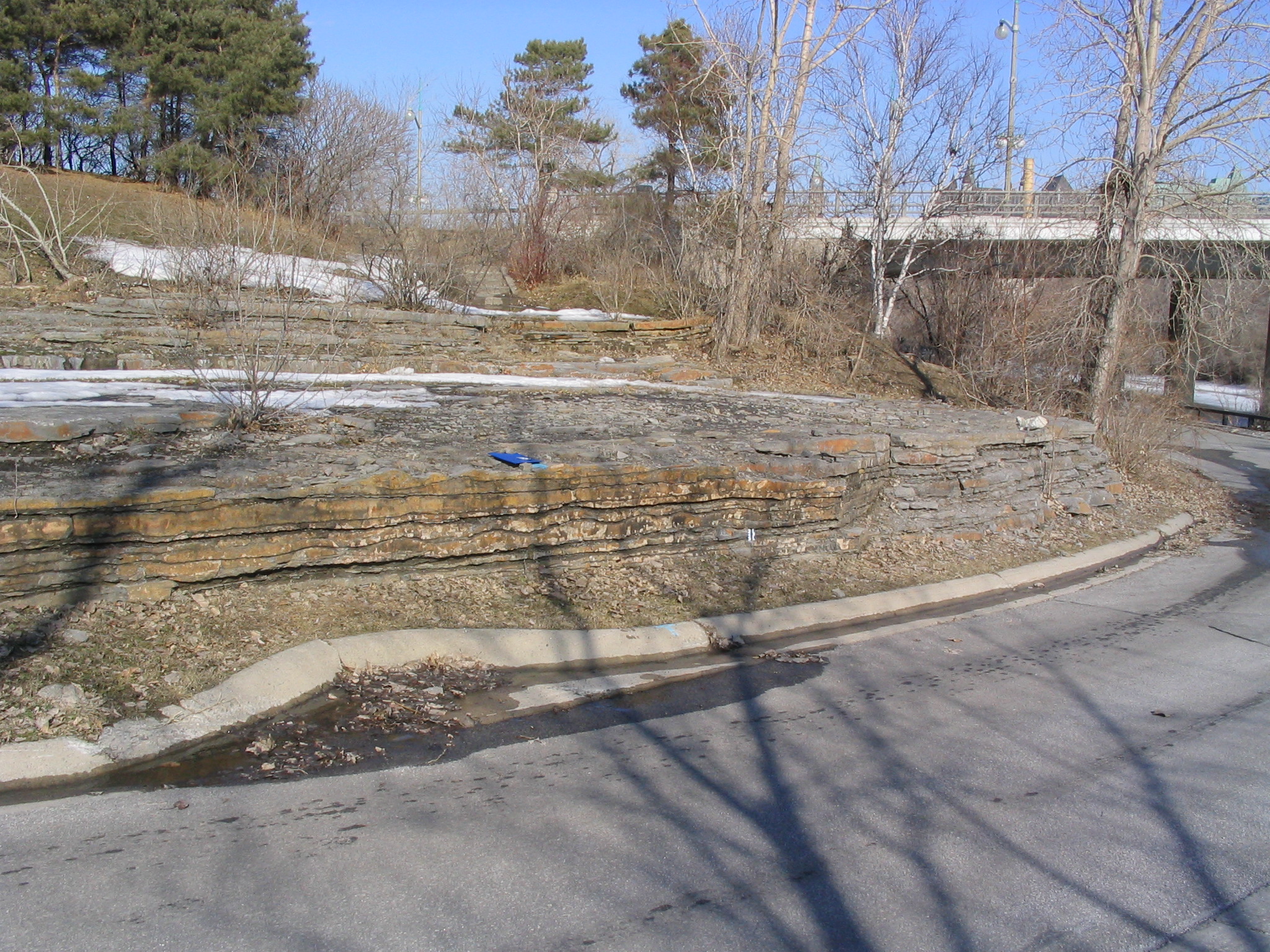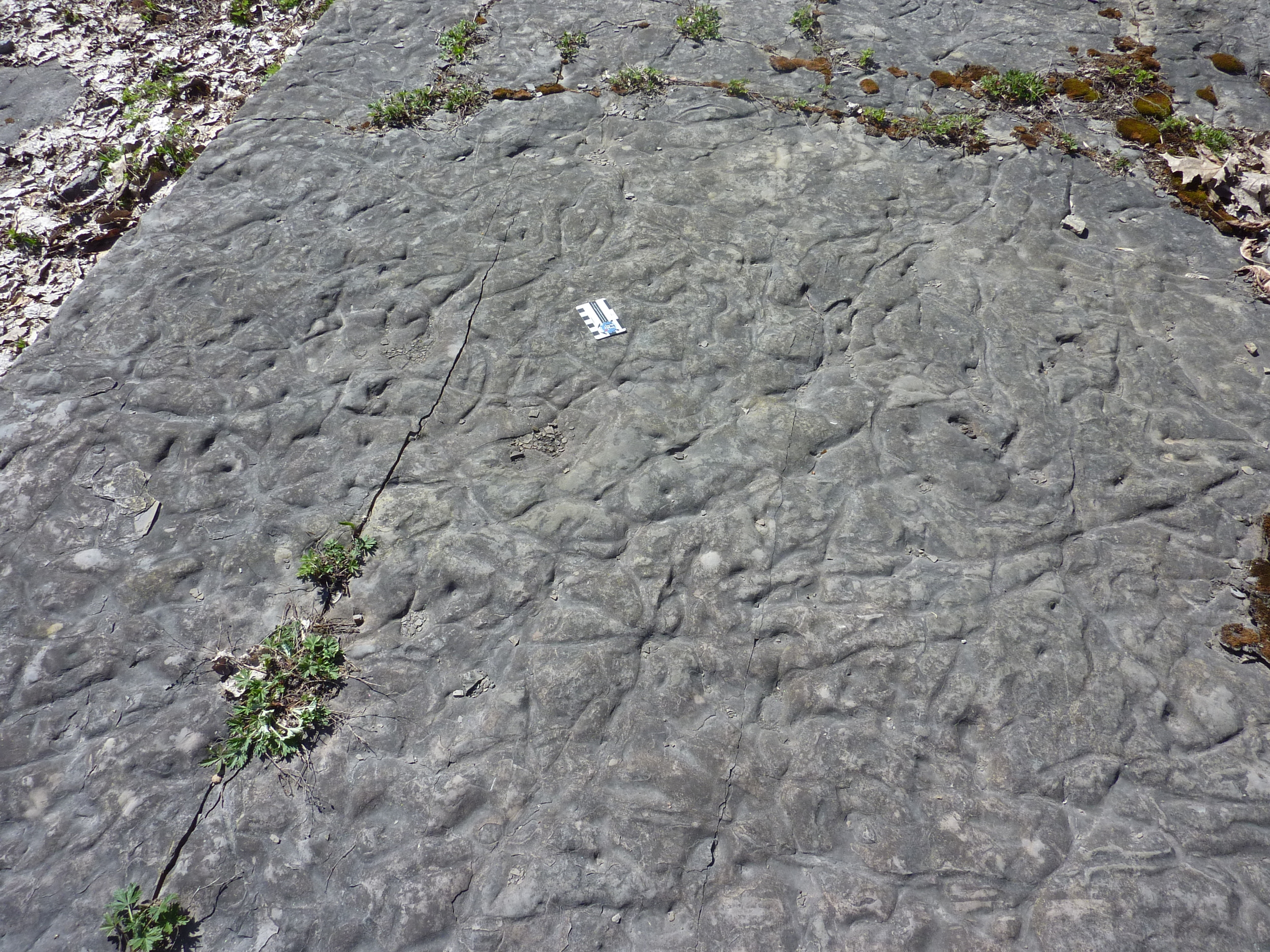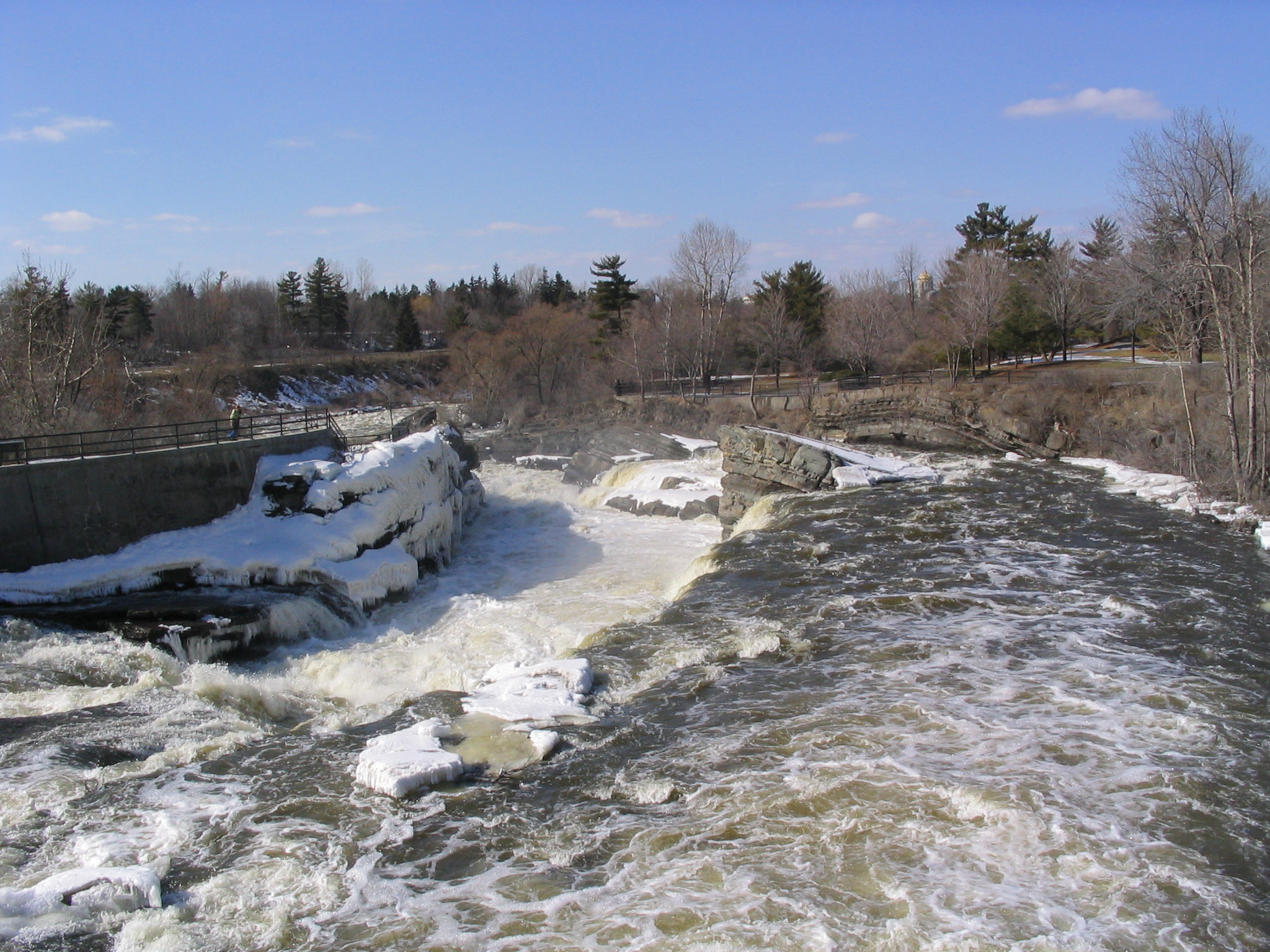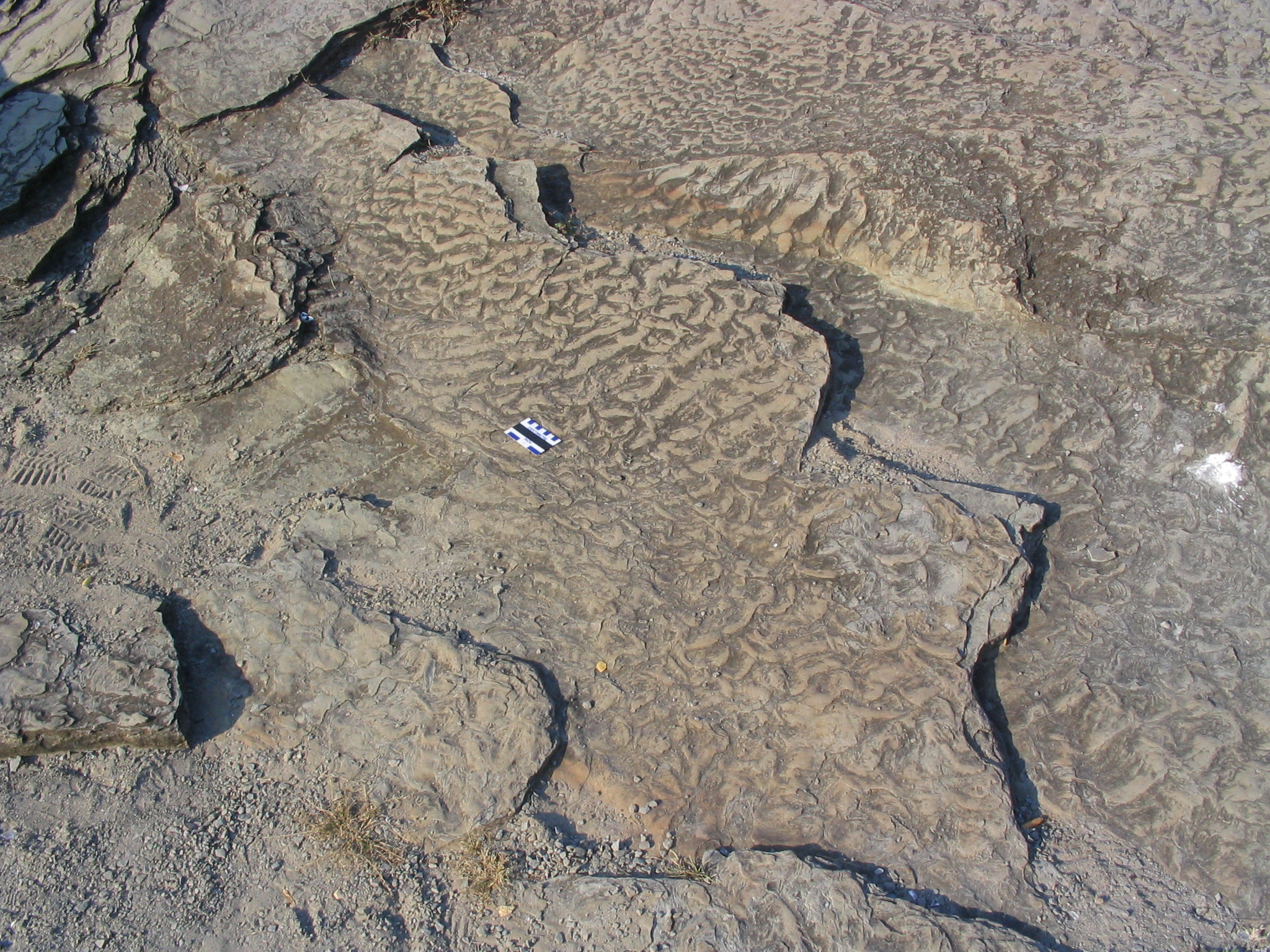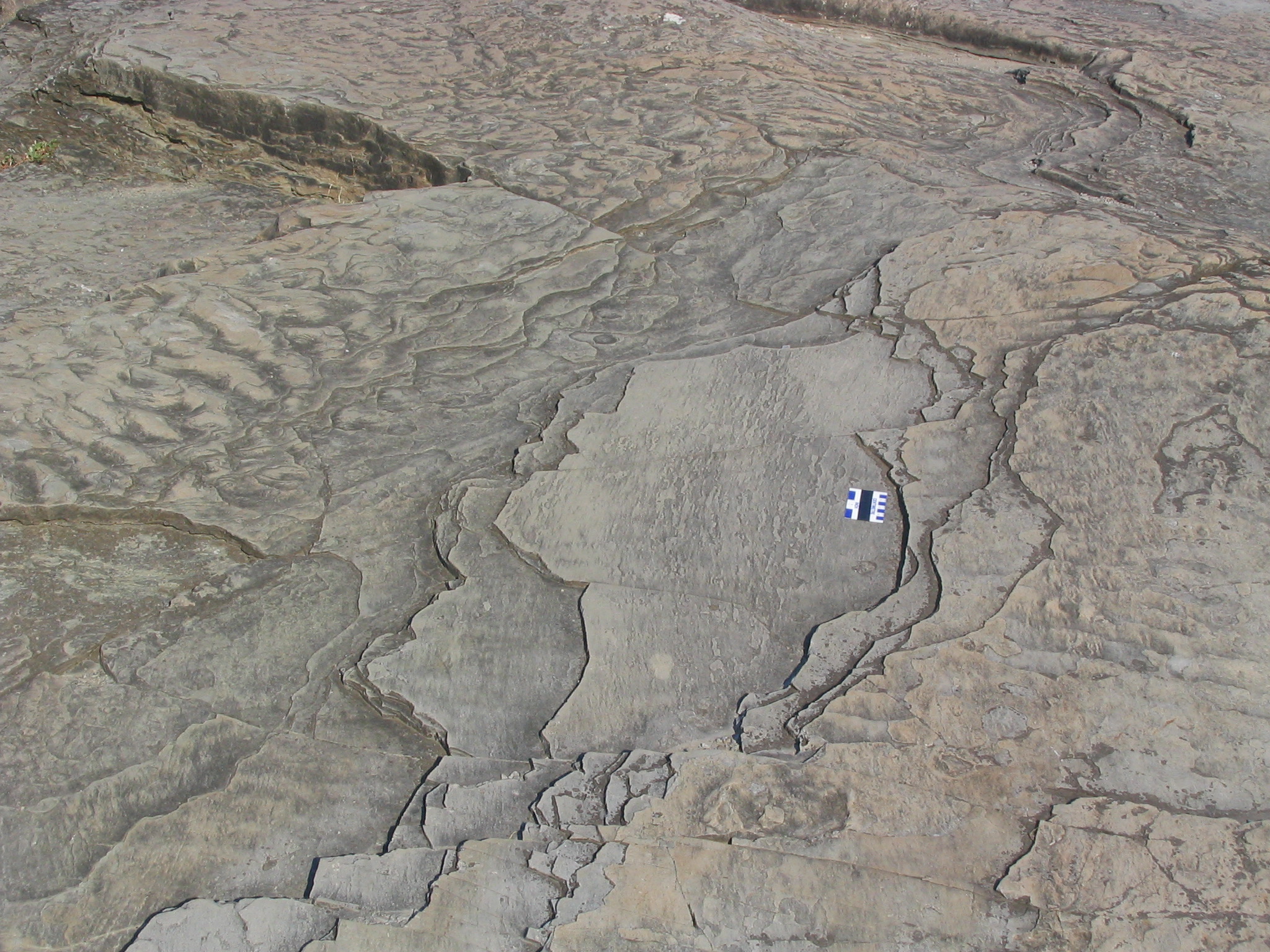16. Lac des Fées Trail, Gatineau Park
Limestones from a depositional environment of shallowing water depths
Lac des Fées Trail, Gatineau Park, Québec
Du Lac des Fées Promenade, south of Blvd. des Allumettières, Gatineau, PQ.
Hull Formation coarse-grained limestone characterized by cross-beds, erosive boundaries between beds, and rip-up clasts, Du Lac des Fées Promenade, Gatineau.
Photo by B. Halfkenny.
Park at the end of Rue Laramée and follow the sidewalk back down to Du Lac des Fees Promenade, south of the exit to Boulevard des Allumettières. The outcrops are on the west side of Du Lac des Fees Promenade.
The rocks are part of the Hull Formation, of Late Ordovician age. The outcrop shows a stratigraphic division between fine-grained thin-bedded limestone separated by thin shale in the lower half (lower Hull Formation), and thicker bedded, coarser-grained limestone in the upper half (upper Hull Formation). There is almost no shale associated with the coarser-grained limestone.
In addition, these latter rocks contain abundant sedimentary structures that indicate higher levels of energy associated with deposition: cross-beds, erosive boundaries between beds, and rip-up clasts (fragments) from an underlying bed incorporated into the overlying bed. The rip-up clasts indicate that the underlying bed was lithified prior to erosion. The granular texture of the upper limestones is due to abundant fragments of echinoderms; some beds are 100% echinoderm fragments.
Hull Formation fine-grained thin-bedded limestone separated by thin shale in the lower half of section, Du Lac des Fées Promenade, Gatineau.
Photo by B. Halfkenny.
Rock classification names appropriate for the upper half of the outcrop are echinoderm grainstone and skeletal rudstone; for the lower half, skeletal packstone and skeletal mudstone. These names identify contrasting energy regimes. The sedimentary structures and grain size contrast between the lower and upper part of the outcrop (and this change can be traced regionally from the Ottawa area) identifies a shallowing of water depth; the upper rocks likely accumulated in water depths of less than 10 m. The presence of echinoderms indicates normal seawater salinity.
The Hull Formation is an important source of building stone in Ottawa and Gatineau.
